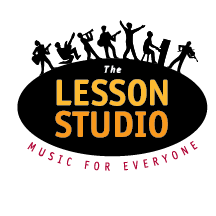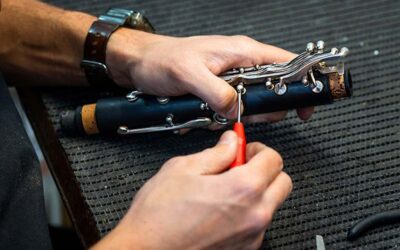Introduction
Playing drums is a blast. But playing drums in a band? That’s where the magic really happens. Whether you’re a beginner learning your first beat or a student at The Lesson Studio eyeing a spot in the Rock and Pop Music Academy (RPMA), developing the right drum skills will help you become a confident, reliable, and musical drummer.
This guide is for all drummers — kids, teens, adults, and parents — who want to play well with others. Let’s break down exactly what it takes.
Why Playing in a Band Is Different
Start with Solid Timing and Groove
Use a Metronome, Always
It might not be the most exciting part of drumming, but nothing matters more than your timing. A metronome helps you build internal rhythm, which is crucial for staying consistent. Try practicing basic grooves at different tempos — slow, medium, and fast — and see if you can stay in time without drifting.
Play Along with Music
Choose your favorite songs and drum along. Start with simple tracks that have a strong backbeat. If you drift off tempo or lose the beat, pause and go back. Listening carefully and reacting in real time is what makes you a great bandmate.
Master the Basics Before Flashy Stuff
Work on Rudiments
Drum rudiments are the alphabet of drumming. Single strokes, doubles, paradiddles — these are the foundation. Try the open–closed–open method: start slow, build up speed, then return to slow. This builds control and smoothness.
When I was learning, I used to practice rudiments during commercial breaks while watching TV. I’d tap them out on a pillow or practice pad. Over time, I noticed my hands felt faster and more in sync without me even thinking about it.
Focus on Technique and Posture
Good grip and posture reduce injury and make you more efficient. Whether you play traditional or matched grip, hold your sticks loosely and use your fingers and wrists for control. Sit comfortably with your feet flat and your back straight. Small things like this can make a huge difference, especially in long rehearsals.
Develop Limb Independence
Coordinate Hands and Feet
In band settings, you’ll often need to play one rhythm with your right hand, another with your left, tap your hi-hat with your foot, and play the bass drum — all at once. It sounds intense, but it’s a skill that can be trained slowly.
Start simple. Try a basic rock groove. Then add in snare accents, bass drum variations, or off-beat hi-hat patterns. These are the kinds of skills that make you stand out in a band rehearsal.
Practice Footwork
Experiment with heel-down and heel-up techniques on your bass drum. Heel-down offers more control for soft playing, while heel-up gives you more power. Want to level up even more? Try the heel-toe technique for fast doubles on your kick drum. It’s a game-changer once you get it.
Add Dynamics and Personality
Play with Volume Control
A good band drummer knows how to play at different volumes. Not every song needs power and volume. Practice ghost notes and soft strokes to support verses and save your louder hits for choruses and bridges.
Use Accents and Ghost Notes
Accents help create dynamics and bring your groove to life. Ghost notes — those soft, barely audible snare taps — add texture and groove without overwhelming the mix. Practice alternating ghost notes and accents to make your drumming more expressive.
Explore Different Techniques
Try Open-Handed Drumming
Instead of crossing your hands when playing hi-hat and snare, try using your left hand on the hi-hat and your right on the snare. This frees up your movement, especially during fills or more complex grooves.
Experiment with Different Grips
Matched grip is common for most rock and pop drummers, but learning traditional grip can offer a new feel and is useful in jazz and marching settings. Having flexibility in your technique makes you more versatile.
Practice with a Plan
Set Weekly Goals
Don’t just sit down and play random grooves. Break up your practice time:
- 10 minutes on warm-ups
- 10 minutes on technique (rudiments or independence)
- 20 minutes on band songs or play-alongs
- 10 minutes of creative jamming
Keep a practice journal. Log your tempos, your wins, and your challenges. It makes a huge difference in motivation and focus.
Record Yourself
Use your phone to record practice sessions or band rehearsals. Watching and listening back will highlight things you never noticed, like speeding up, uneven dynamics, or posture issues. It’s one of the fastest ways to improve.
Play with Other Musicians
Drumming in isolation is fine, but playing with others is where your skills truly develop. At The Lesson Studio’s Rock and Pop Music Academy, you’ll get to:
- Rehearse weekly with a real band
- Learn multiple genres and arrangements
- Perform on stage in front of live audiences
- Collaborate, adapt, and grow as a musical team
Playing with others teaches you how to listen, adjust, and blend your sound with bass lines, vocals, and guitar rhythms. You’ll also learn how to recover quickly if something goes off — an essential skill for any performing musician.
Stay Healthy and Inspired
Drumming is physical. It requires stamina, strength, and flexibility.
- Warm up before long sessions
- Stretch your wrists and shoulders
- Stay hydrated and take breaks during practice
- Keep inspired by listening to great drummers, attending shows, or watching videos of live performances
Most importantly, remember that everyone progresses at a different pace. Some days you’ll feel on fire, others you’ll feel offbeat. That’s part of the journey.
Ready to Play in a Band? Start with RPMA
If you’re serious about drumming and want real experience playing with others, there’s no better place to start than the Rock and Pop Music Academy at The Lesson Studio in Boulder, CO.
You’ll work with experienced instructors, rehearse weekly in a band setting, and perform live shows in the Boulder area. Whether you’re a beginner or already playing, RPMA helps you grow faster, stay motivated, and play the music you love.
Take your drumming from practice pad to performance stage. Visit The Lesson Studio and get started today!

Don’t forget to share this post.
Coming Back as an Adult to Music Lessons: Why It Will Be Much Better and More Consistent This TIme
IntroductionFor many adults, the thought of returning to music lessons stirs up a mix of nostalgia...
Best Practices for Piano Lessons for Kids Ages 5 to 7 — and How to Find the Right Teacher
IntroductionIntroducing a child to piano between the ages of 5 and 7 can be the beginning of a...
How to Improve Singing in a Teenage Rock Band
IntroductionIf you’re a teenager singing in a rock band or hoping to join one, having a strong...
Top 5 Beginner Guitar Models
IntroductionIf you’re starting guitar, whether you are a kid, teen, or adult, the right first...
How to Choose an Instrument for School Band
[pac_divi_table_of_contents included_headings="off|off|on|off|off|off"...
Why You Should Become a Bass Player Instead of a Guitar Player
[pac_divi_table_of_contents included_headings="off|off|on|off|off|off"...
Acoustic vs Electric Guitar: Key Differences Explained
[pac_divi_table_of_contents included_headings="off|off|on|off|off|off"...
How to Clean and Maintain Brass and Woodwind Instruments | Care Tips for Students & Parents
[pac_divi_table_of_contents included_headings="off|off|on|off|off|off"...
Fun Violin Lesson Ideas for Kids Ages 6–8 | A Parent’s Guide
[pac_divi_table_of_contents included_headings="off|off|on|off|off|off"...
From Shy to Stage-Star: How Rock Camp Transforms Teen Confidence
[pac_divi_table_of_contents included_headings="off|off|on|off|off|off"...










